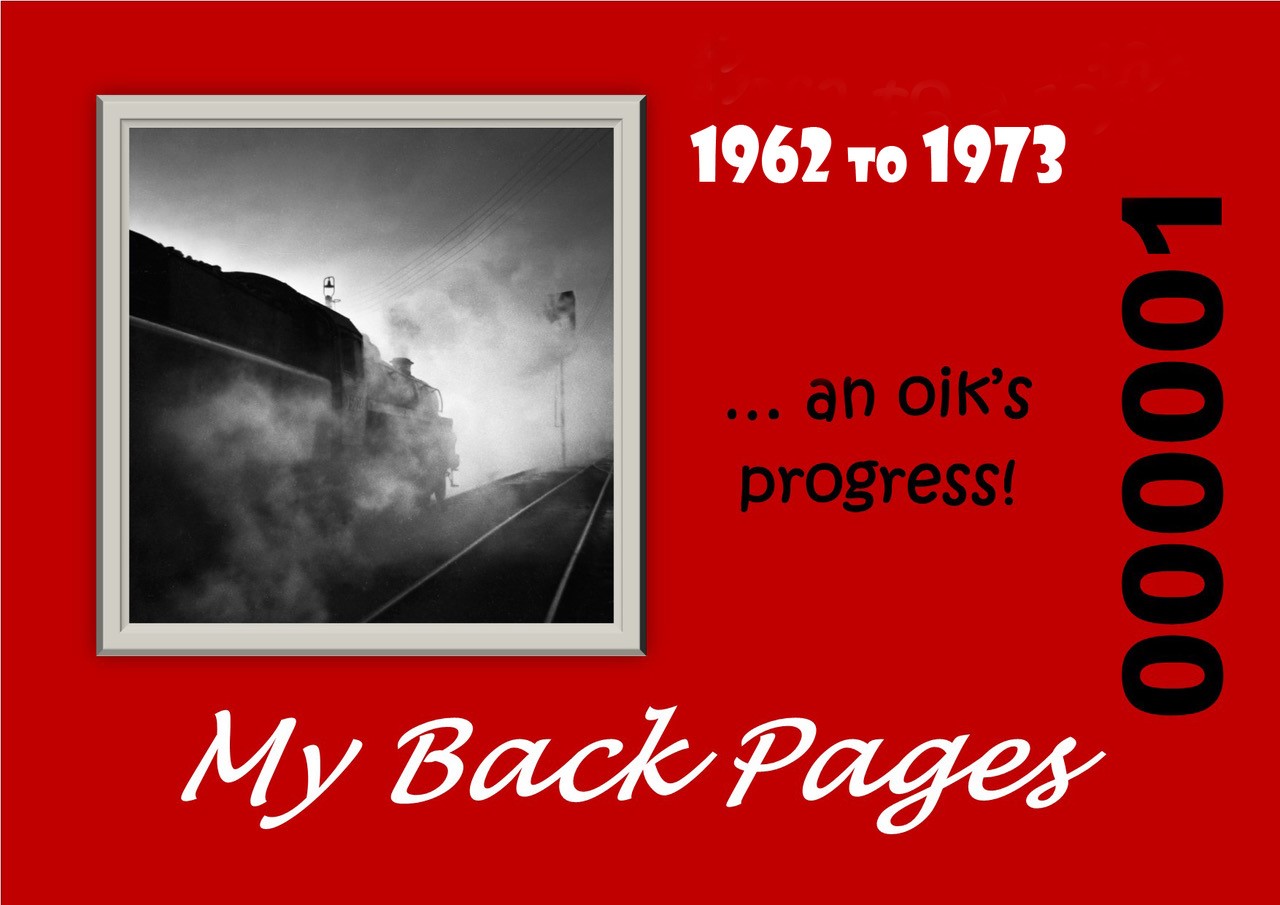14th November 2023 “My Back Pages” by David Pearce

Taking his theme from the lyrics of Bob Dylan’s ‘My Back Pages’ track, on Tuesday 14th November David Pearce gave us a fascinating semi-autobiographical presentation of his early days of railways and photography from moving to Nottingham in 1962, through to 1973.
His first photograph, taken in October 1962, was of recently-withdrawn 46100 ‘Royal Scot’ on Nottingham shed, followed by an English Electric Type 3 (Class 37) at Nottingham Victoria on the Bournemouth-York.
In 1963 David made his first visit to Grantham, where we saw A4 No. 60034 ‘Lord Faringdon’ on an Up express and many wonderful steam/diesel transitions views of diesel drivers in steam overalls, water cranes and gleaming new Brush Type 4s.
1964 saw David extend his travels to Derby (with LMS 10001 condemned on the Works) and Crewe North Shed, with lines of recently-withdrawn Duchess class locomotives. David’s beloved Great Central main line featured many times, with 9Fs on lengthy goods workings.
A focus on the Great Central continued into 1965 with views of now well-known workings such as the 14.38 from Marylebone and the 17.15 from Nottingham. At this time these workings could be hauled by almost any class of engine including Royal Scots, V2s, Black 5s and Britannias – not to mention the occasional Type 2 diesel. Much of the wider activity around the Nottingham area was captured in views of Westhouses, Kirkby-in-Ashfield, Colwick and Toton depots, including a number of photographs of the original Peak class locomotives, D1 to D10. Most of David’s photographs were black and white, but on 29th May 1965 he took one of his first colour images - 4472 ‘Flying Scotsman’ at Nottingham Midland on the RCTS East Midlander railtour.
1966 saw David at Millers Dale in the Peak District, at Chester (on a school visit that somehow managed to include the depot!) and on his regular family summer holiday trip to Wales, with BR Standard Class 4 4-6-0s on the Cambrian lines. Returning to the Great Central for the final weekend of through operation on September 3rd 1966 we saw a colour view of the 17.15 from Nottingham Victoria, followed by Merchant Navy 35030 ‘Elder Dempster Lines’ on the Locomotive Club of Great Britain’s ‘The Great Central Railtour’, concluding with D5000 on the 14.38 from Marylebone.
4th February 1967 saw David at Hopton Incline on the Cromford and High Peak Railway, followed by some lovely twilight-of-steam shots at Buxton shed. In the summer he visited Lancaster, with steam still in evidence, including 70035 on a Barrow to Euston, a Britannia on a parcels working and a 9F on a Pocket Nook to Kingmoor working. 1967 concluded with some wonderfully evocative views of the Tebay banking engines.
Like many enthusiasts, 1968 was focused on the end of steam with David once again in the Lancaster area. Several of his activities, including a cab ride on Black 5 45073 from Preston to Heysham, were facilitated by his ‘Uncle Bill’ - none other than W.G. Thorpe, who later became the first Chief Executive of British Railways. David’s last views of steam were on 25th July 1968 at Carnforth, including Black 5 45134 which was withdrawn on 3rd August 1968.
After the end of steam, David’s interest changed more towards photography and his interest in railway infrastructure grew. In 1969 he photographed the remaining Nottingham Arkwright Street to Rugby service, including its final day on 3rd May 1969. Visits to North Yorkshire included early developments on the North Yorkshire Moors Railway and also views of Scarborough with its original platform canopy.
In 1971 – his ‘A’ Level year – David admitted to doing very little railway photography, but he did still include some views of Trent Junction in the latter days of semaphore signalling and of Colwick depot before demolition.
1972 took David to college in Ponteland and provided a great opportunity to photograph in the North-East, including Filey Holiday Camp. His annual family holiday to Wales also produced a lovely view of D5056 on the explosives train at Penrhyndeudraeth.
Bringing us into 1973, the final year of his talk, we were again back on David’s beloved Great Central at East Leake with the gypsum working and at Filey Holiday Camp to see Sir Nigel Gresley and Bittern turning on the triangular junction. To close we saw a miscellany of Newcastle-area views including South Hetton Colliery, a class 31 coming off the Weardale line at Bishop Auckland, North Blyth Coal staithes, haunting views of closed stations at Riccarton Junction, Reedsmouth Junction and Angerton, and the wonderful colliery lines at Backworth and Fenwick.
The meeting closed at 10.10 pm to thunderous applause, not only for Davids excellent photography but also for weaving together his railway and personal experiences into a truly memorable narrative of his own Back Pages.
